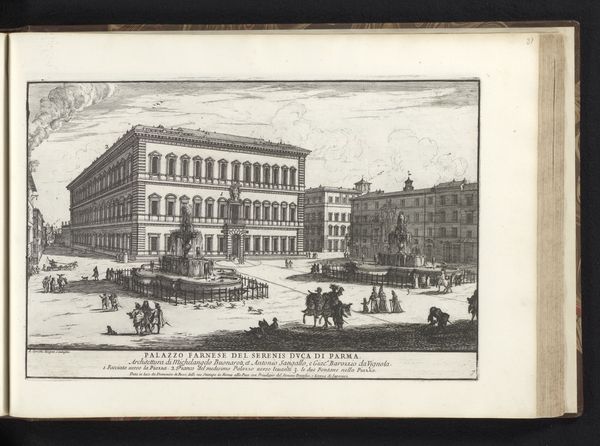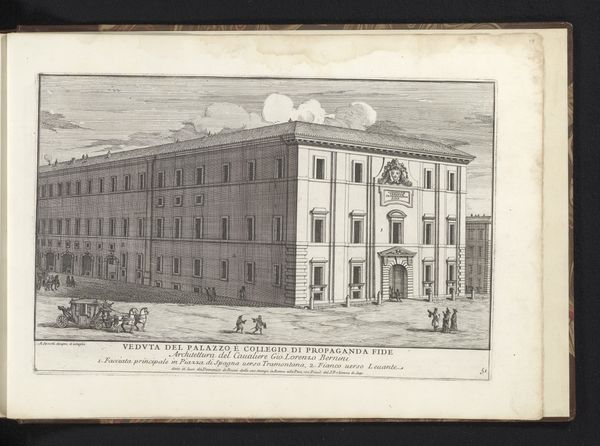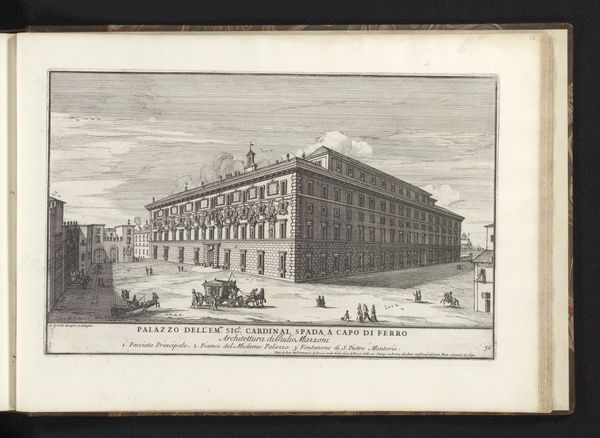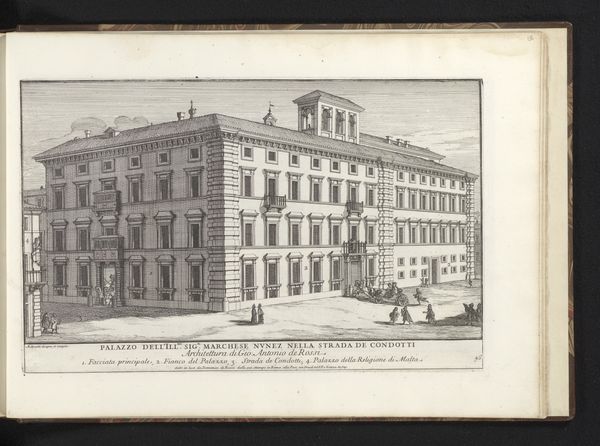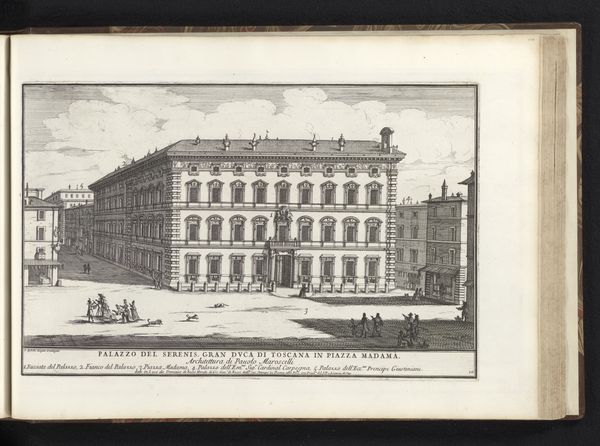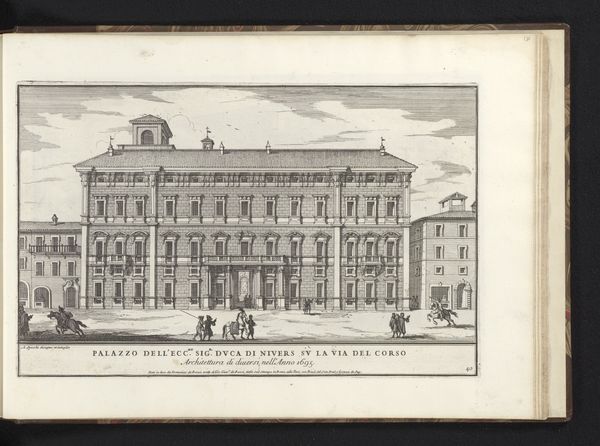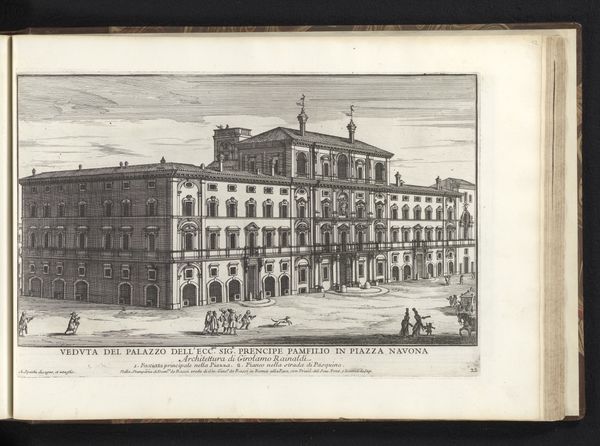
print, engraving, architecture
#
baroque
# print
#
form
#
line
#
cityscape
#
engraving
#
architecture
#
realism
Dimensions: height 207 mm, width 321 mm
Copyright: Rijks Museum: Open Domain
Editor: This is Alessandro Specchi's "Palazzo Giustiniani te Rome," an engraving from 1699. The sheer size of the building and the figures milling about in the foreground really give a sense of scale. What stories do you think this piece tells us? Curator: It speaks volumes, especially when considering the societal hierarchy embedded in the urban landscape of Baroque Rome. This engraving isn’t just about the Palazzo's architecture; it's a carefully constructed representation of power, class, and the very staging of public life. Editor: How so? Curator: Think about it. The Palazzo, a symbol of elite status, dominates the composition. Yet, look closer. The figures populating the piazza—are they merely incidental? Or do they represent the populace subjected to the visual and architectural power of the Giustiniani family? Consider the politics of urban space during this era. Editor: It’s like the building itself is performing power. Curator: Precisely. This engraving, therefore, functions as propaganda, reinforcing existing social structures. But we can also consider how Specchi, through his artistic choices, either upholds or subtly challenges this power dynamic. Do you notice any specific element that makes you feel that way? Editor: I see what you mean. The tiny figures almost seem dwarfed. The scale emphasizes the elite's dominance, the 'gaze' from the palace could indicate its dominance of those spaces. Curator: Absolutely. This work prompts us to consider how architectural representations are never neutral; they’re always engaged in a power struggle. Editor: I never thought about engravings like this! I see it's less about depicting a place and more about telling a story about social dynamics and who controls the narrative of the space. Curator: Indeed. And that's the power of engaging with art from a critical, contextual perspective.
Comments
No comments
Be the first to comment and join the conversation on the ultimate creative platform.
